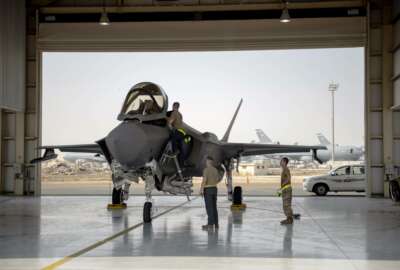

For the Air Force’s enterprise IT and cyber infrastructure division, connecting airmen and guardians with the data they need along the entire transactional path,...
For the Air Force’s enterprise IT and cyber infrastructure division, connecting airmen and guardians with the data they need along the entire transactional path, to do their mission, is the focus.
According to Col. Bobby King, senior materiel leader for the division, that starts with the endpoint devices and any software or security tools which are on those devices. The data, as he said, “is all over the place,” including in a Cloud One program and at various data centers at bases.
King said the different bases and organizations operate their own data centers with various costs and capabilities. He sees an opportunity to be more efficient – by consolidating much of that disparate data into the cloud.
“It also makes the connectivity to that data much easier – and wherever the guards can reach it, no matter where they are around the world,” he said on Federal Monthly Insights – Digital Modernization: Enterprise Modernization.
From an IT infrastructure perspective, the Air Force wants all of the service’s bases to look the same, which is currently not the case. Maj. Gen. Michael Schmidt – program executive officer for the Command, Control, Communication, Intelligence, and Networks (PEOCIN) at Hanscom Air Force Base, Massachusetts – said they have supported IT infrastructure in a piecemeal fashion with end-of-year funding for a while.
“Having an enterprise-level Help Desk, not a help desk necessarily at every base that is different … there’s a lot of things that we can do by pulling that IT infrastructure together, having a common infrastructure across all of our bases, and everything from security to user experience all benefit from getting to that goal,” he said on Federal Drive with Tom Temin.
That is why his organization asked commercial vendors about the best way to do that. Enter managed services – the idea of outsourcing IT functions to a third party.
Schmidt said the Air Force is using its enterprise IT as-a-service risk reduction effort to determine what it would incentivize for managed services providers in their service level agreements, such as the time it takes to answer help desk calls, or system up time.
“During the risk reduction effort, we’re being very careful not to unnecessarily link payments to contractors, to those SLAs – not that we’re not holding them responsible for everything, because we are – but at the same time, we want them to tell us what SLA ‘s they think we should use,” he said. “And so ultimately, as we move into production, and really try to incentivize financially the contractors, that we’re confident that we have the right SLAs that we’re putting on the contract.”
His office needs to ensure contracting vehicles and the SLAs are flexible enough, in case funding is unstable in a given year. Schmidt said they cannot afford to put the government in a position of paying for something it did not receive, or which led them down a different, more challenging path for King’s division than expected.
“Some of the most important SLA s are subjective, and that is really a challenging thing to deal with from a contractual standpoint,” Schmidt said. “So user experience, measured by user satisfaction, to me, is the most important metric out there. But that is a hard one to contractually incentivize.”
Find part 2 of the interview here.
Copyright © 2025 Federal News Network. All rights reserved. This website is not intended for users located within the European Economic Area.
Amelia Brust is a digital editor at Federal News Network.
Follow @abrustWFED


